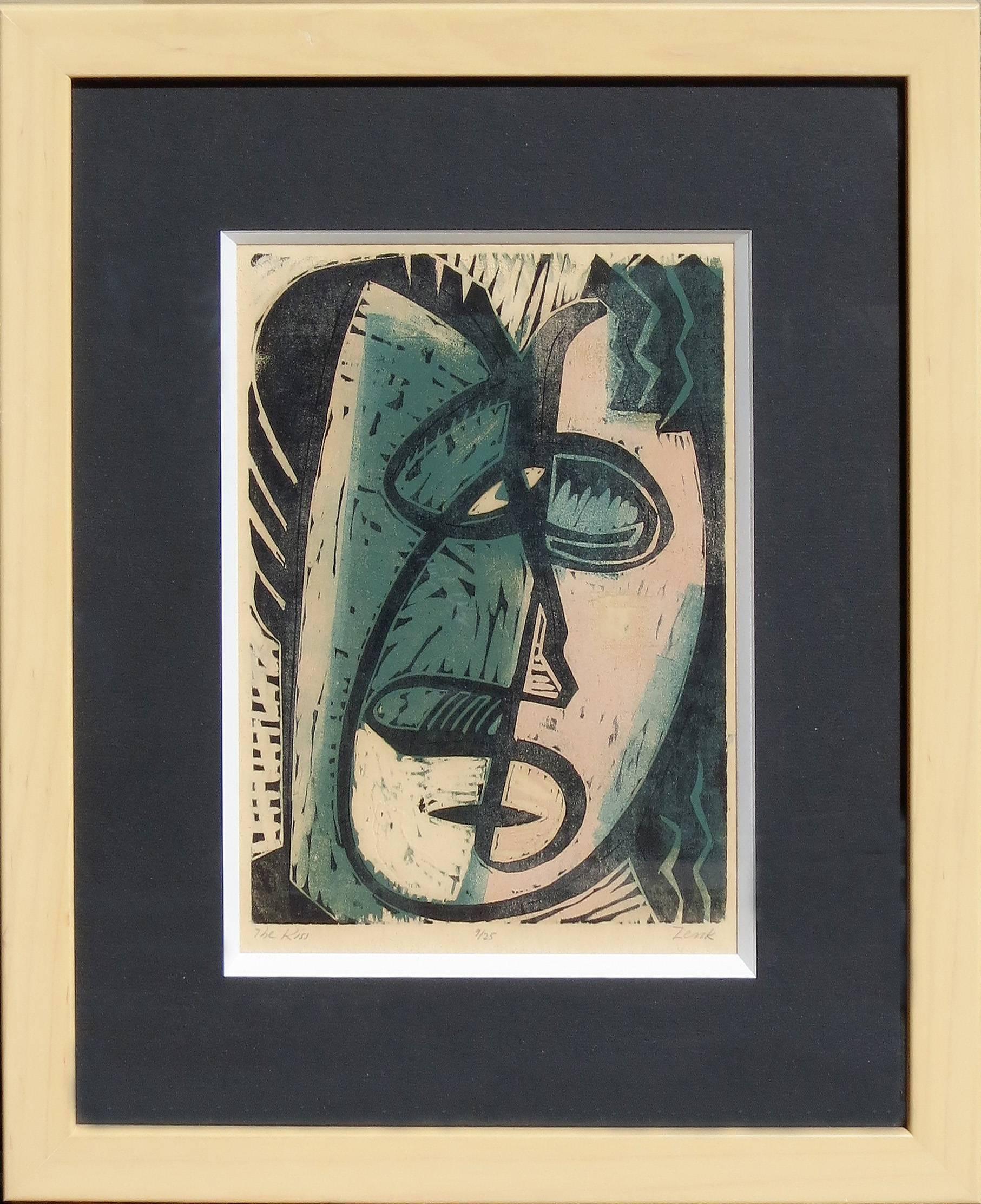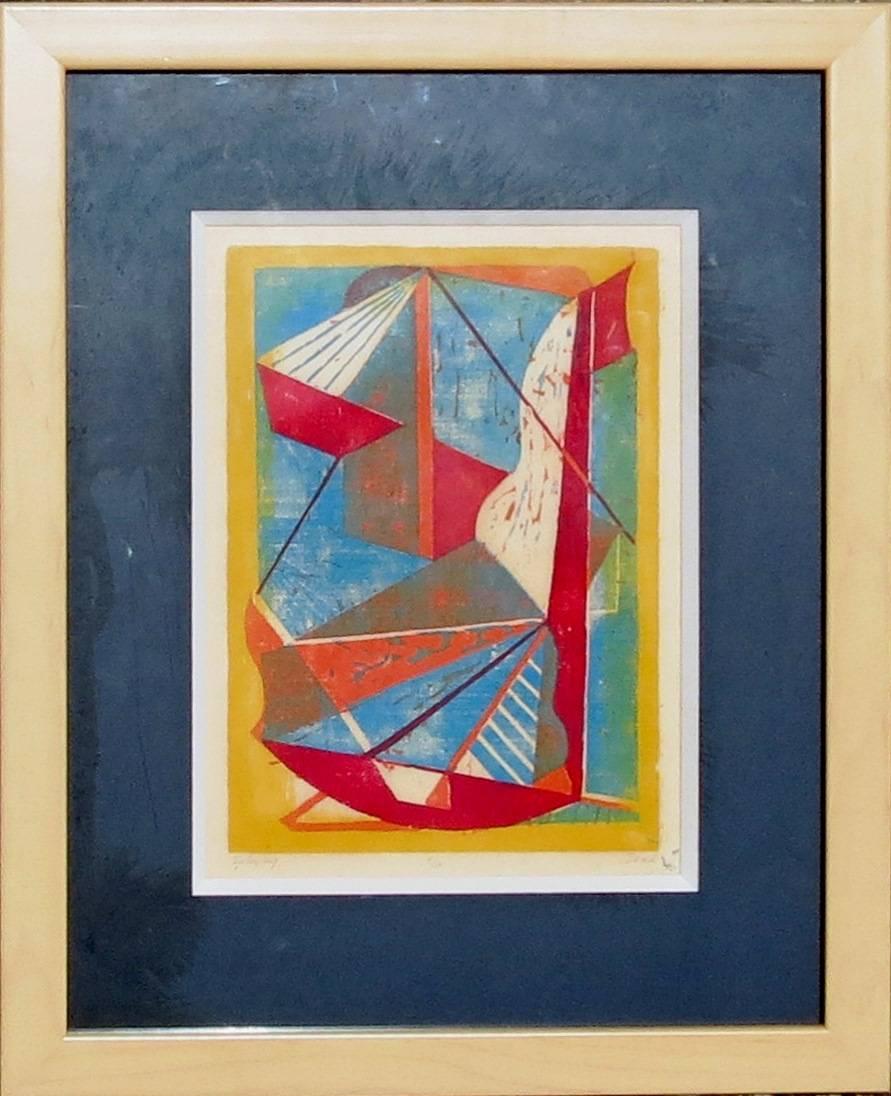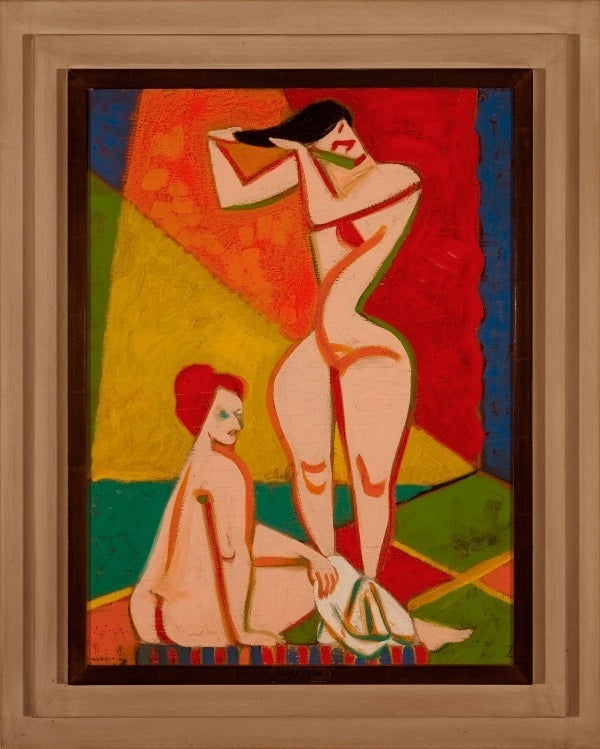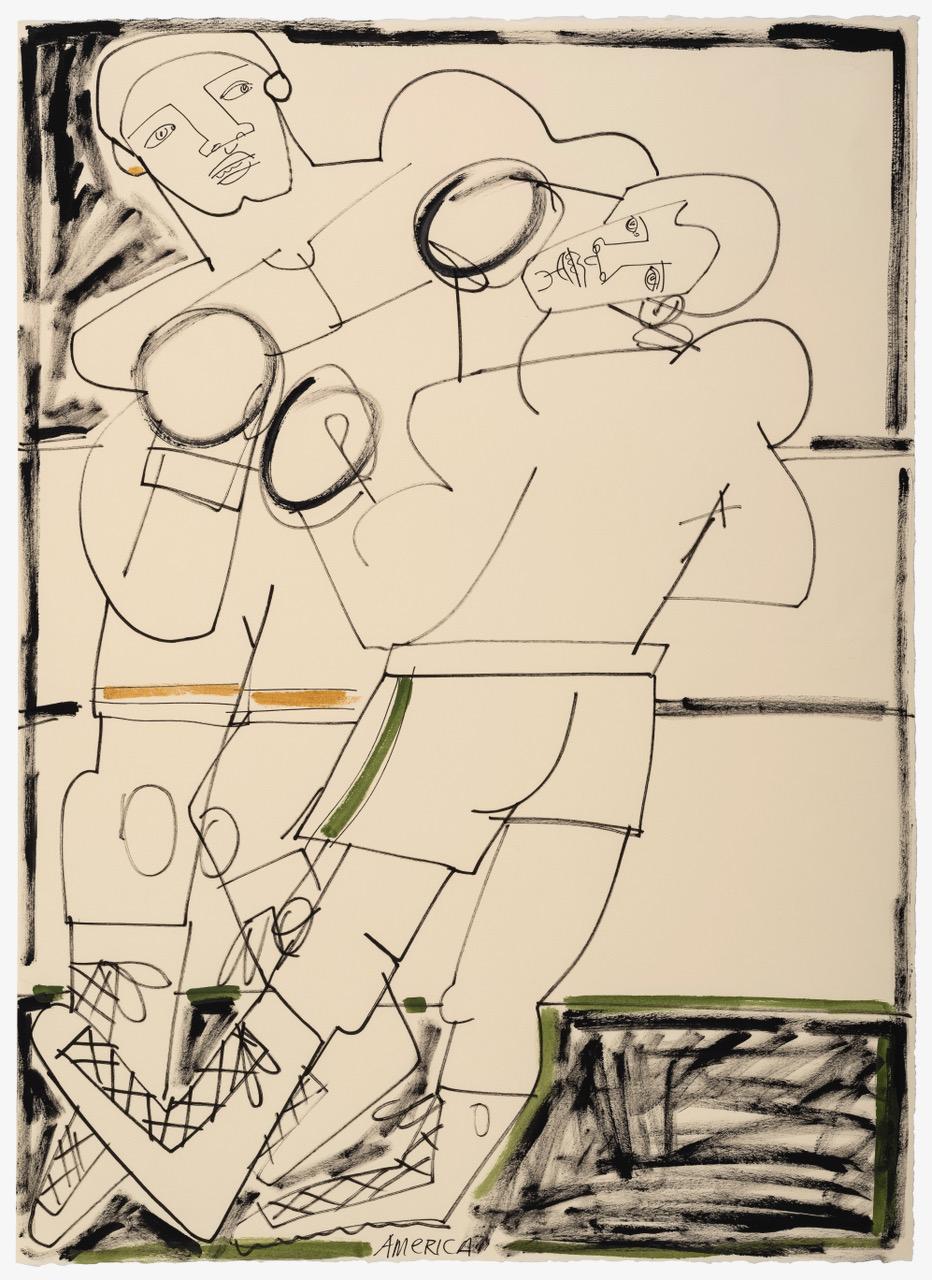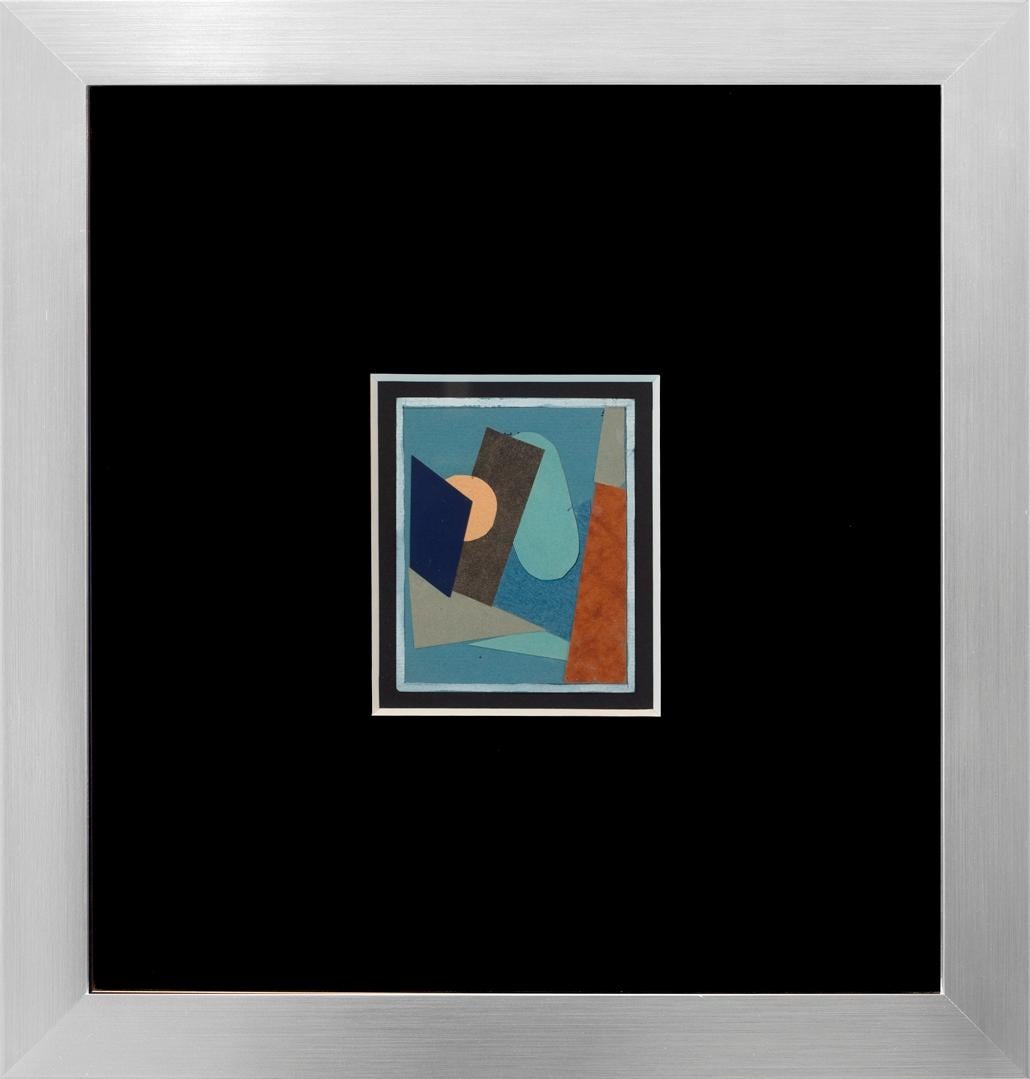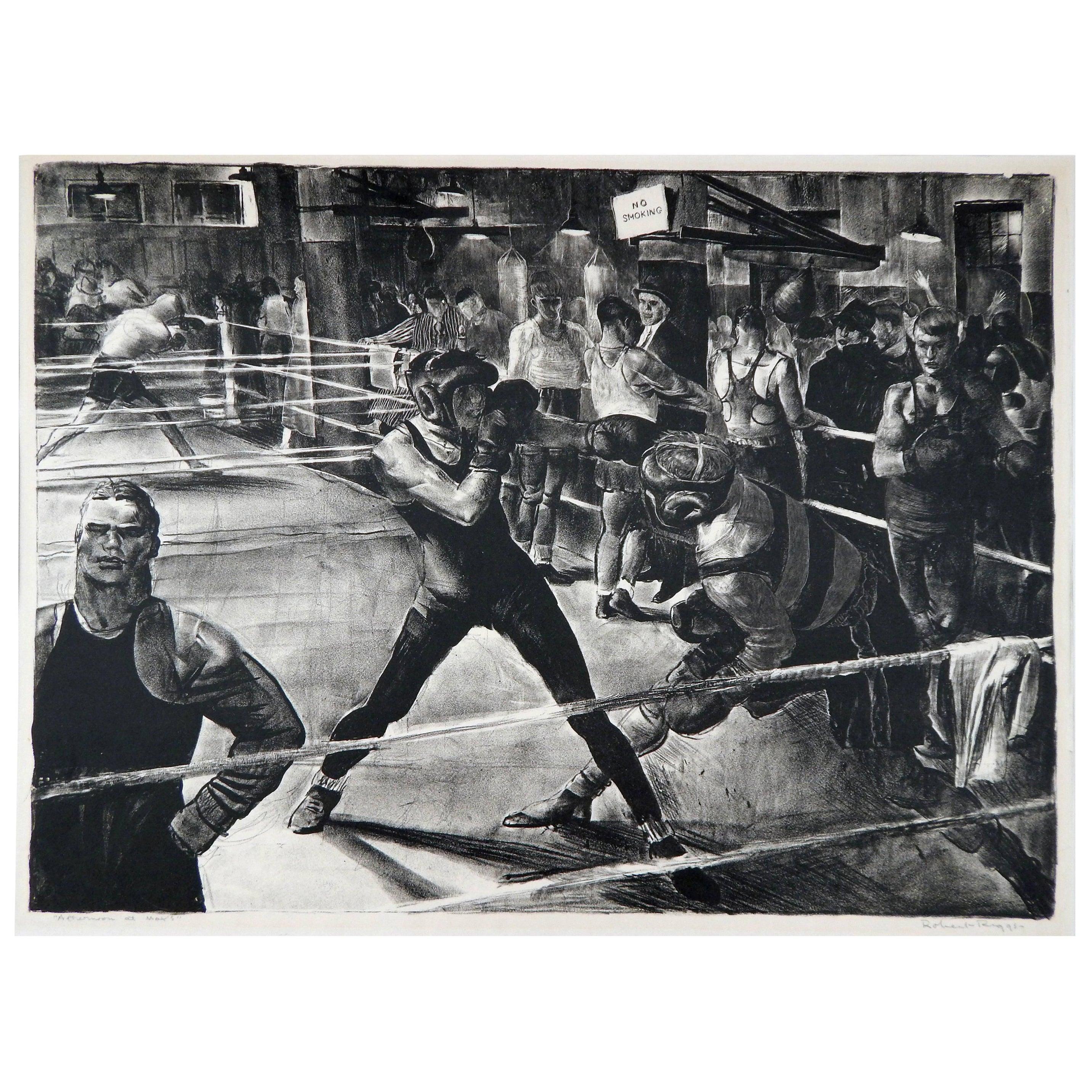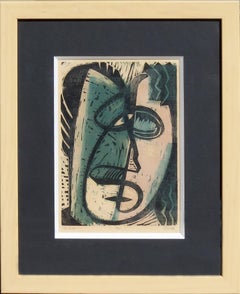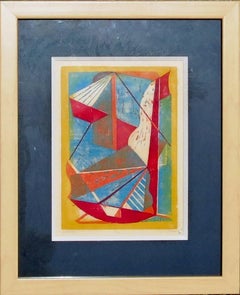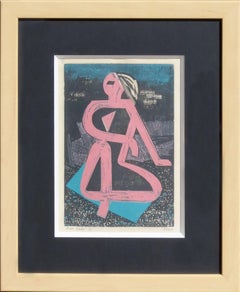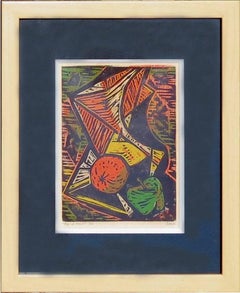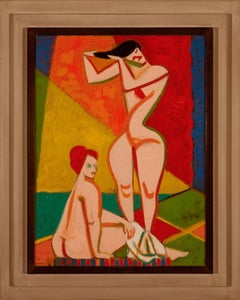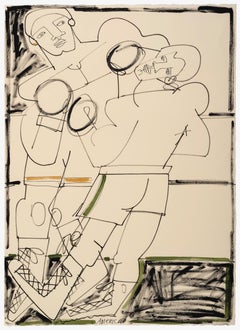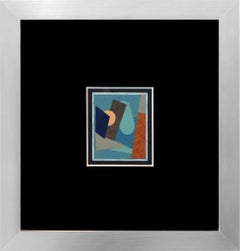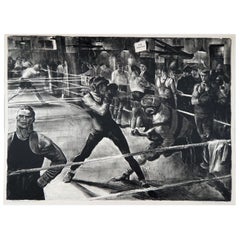Items Similar to "The Knockdown"
Want more images or videos?
Request additional images or videos from the seller
1 of 7
Josef Zenk"The Knockdown"circa 1940
circa 1940
$7,000
£5,425.53
€6,142.99
CA$10,019.92
A$10,925.79
CHF 5,678.66
MX$130,796.23
NOK 72,028.32
SEK 67,468
DKK 45,880.21
About the Item
Signed Lower Right
Titled Lower Left
Numbered Lower Center
Josef Zenk (1904-2000)
Josef Zenk was born in New York City in 1904. After graduating from high school he studied for three years at the National Academy of Design, followed by further studies at the Art Students League in New York.
In 1926, Zenk moved to Utica, New York, where he began to produce landscape, figurative, and still life paintings. He was part of a small community of artists who in 1927-28 organized exhibitions with many of the leading American painters including Hopper, Sheeler and Fiene. In 1930 he was granted a full scholarship to study at the Munson Williams Proctor Institute where he later became an Instructor until World War II. While there, an exhibition of his work produced the greatest attendance of any show at the institution of that year. In 1942 "Zuni" by Zenk became the first work purchased by the Munson Williams Proctor Institute for its Central New York Artists Collection.
After service in the Armed Forces from 1942-1945, Zenk left Utica and moved his studio to Palisades Park, New Jersey. Under the G.I. Bill he began to study at the New School in New York City. Along with Louis Schanker, a prominent woodcut artist and teacher at the New School, Zenk and a small group of printmakers formed Studio 74 for the purpose of exhibiting their color wood block prints. The group received immediate critical attention. The New York Times described the work of Josef Zenk as "particularly admirable". One of his prints "The Kiss" was chosen in 1949 as one of the best prints of the year and was exhibited in the National Exhibition of Prints held at the Library of Congress in Washington D.C.
Zenk moved to Bucks County, Pennsylvania in the late 1940's and lived in Upper Black Eddy, a town along the Delaware River, ten miles north of New Hope. He maintained a studio in Palisades Park for while after the move, before eventually working fulltime from his studio in Pennsylvania. Zenk remained active painting and making woodblock prints, while also teaching art classes. He resided in Bucks County until the end of his life at the age of ninety six.
Like several other important Pennsylvania and New Jersey artists, the work of Josef Zenk was only recently rediscovered and brought to light. For the remaining thirty five years of his life, he chose a somewhat reclusive lifestyle, away from the frenetic art scene.
Josef Zenk's works have been shown in over twenty seven museums including the San Francisco Museum of Art, the Brooklyn Museum, the Newark Museum, the Seattle Museum of Art, and the National Academy of Design. Through the many exhibitions during his career, he has progressed from a stylized realism in landscape and figure painting to a powerful modernist and abstract style with a strong sense of personal expression.
- Creator:
- Creation Year:circa 1940
- Dimensions:Height: 22 in (55.88 cm)Width: 19 in (48.26 cm)Depth: 2 in (5.08 cm)
- Medium:
- Movement & Style:
- Period:
- Condition:
- Gallery Location:Lambertville, NJ
- Reference Number:Seller: 0002981stDibs: LU157910823
About the Seller
5.0
Vetted Professional Seller
Every seller passes strict standards for authenticity and reliability
1stDibs seller since 2013
13 sales on 1stDibs
Typical response time: 7 hours
- ShippingRetrieving quote...Shipping from: Lambertville, NJ
- Return Policy
More From This Seller
View All"The Kiss"
By Josef Zenk
Located in Lambertville, NJ
Signed Lower Right
Titled Lower Left
Josef Zenk (1904-2000)
Josef Zenk was born in New York City in 1904. After graduating from high school he studied for three years at the Natio...
Category
20th Century Abstract Figurative Prints
Materials
Paper, Color
$7,000
"Swinging"
By Josef Zenk
Located in Lambertville, NJ
Signed Lower Right
Josef Zenk (1904 - 2000)
Josef Zenk was born in New York City in 1904. After graduating from high school, he studied for three years at the National Academy of D...
Category
20th Century Abstract Abstract Prints
Materials
Color, Woodcut
$4,600
"Pink Lady"
By Josef Zenk
Located in Lambertville, NJ
Signed Lower Right
Titled and Numbered Lower Left
Josef Zenk (1904-2000)
Josef Zenk was born in New York City in 1904. After graduating from high school he studied for three years...
Category
20th Century Abstract Figurative Prints
Materials
Paper, Color
$7,000
"Bag of Fruit"
By Josef Zenk
Located in Lambertville, NJ
Signed Lower Right
Edition # 9/18
Josef Zenk (1904 - 2000)
Josef Zenk was born in New York City in 1904. After graduating from high school, he studied for three years at the Natio...
Category
20th Century Abstract Abstract Prints
Materials
Color, Woodcut
$4,100
"Into the Ring"
By Paul Sample
Located in Lambertville, NJ
signed Lower Right
Born in Louisville, Kentucky, Paul Sample established his reputation as a Regionalist landscape, figure and genre painter, particularly of New England subject matter.
In 1925, he moved to California and enrolled at the Otis Art Institute where his teacher was Jonas Lie, and he took private lessons from Stanton MacDonald-Wright and Frank Tolles Chamberlin...
Category
1940s Realist Figurative Drawings and Watercolors
Materials
Paper, Watercolor
"Figure Composition"
By Vaclav Vytlacil
Located in Lambertville, NJ
Signed Lower Right
Vaclav Vytlacil (1892-1984)
He was born to Czechoslovakian parents in 1892 in New York City. Living in Chicago as a youth, he took classes at the School of the Art Institute of Chicago, returning to New York when he was 20. From 1913 to 1916, he enjoyed a scholarship from the Art Students League, and worked with John C. Johansen (a portraitist whose expressive style resembled that of John Singer Sargent), and Anders Zorn.
He accepted a teaching position at the Minneapolis School of Art in 1916, remaining there until 1921. This enabled him to travel to Europe to study Cézanne’s paintings and works of the Old Masters. He traveled to Paris, Prague, Dresden, Berlin, and Munich seeking the works of Titian, Cranach, Rembrandt, Veronese, and Holbein, which gave him new perspective. Vytlacil studied at the Royal Academy of Art in Munich, settling there in 1921. Fellow students were Ernest Thurn and Worth Ryder, who introduced him to famous abstractionist Hans Hofmann. He worked with Hofmann from about 1922 to 1926, as a student and teaching assistant.
During the summer of 1928, after returning to the United States, Vytlacil gave lectures at the University of California, Berkeley, on modern European art. Soon thereafter, he became a member of the Art Students League faculty. After one year, he returned to Europe and successfully persuaded Hofmann to teach at the League as well. He spent about six years in Europe, studying the works of Matisse, Picasso, and Dufy. In 1935, he returned to New York and became a co-founder of the American Abstract Artists group in 1936. He later had teaching posts at Queens College in New York; the College of Arts and Crafts in Oakland, California; Black Mountain College in North Carolina; and the Art Students League.
His paintings exhibit a clear inclination toward modernism. His still lives and interiors from the 1920s indicate an understanding of the art of Cézanne. In the 1930s, his works displayed two very different kinds of art at the same time. His cityscapes and landscapes combine Cubist-inspired spatial concerns with an expressionistic approach to line and color. Vytlacil also used old wood, metal, cork, and string in constructions, influenced by his friend and former student, Rupert Turnbull. He eventually ceased creating constructions as he considered them too limiting. The spatial challenges of painting were still his preference. During the 1940s and 1950s, his works indicated a sense of spontaneity not felt in his earlier work.
He married Elizabeth Foster in Florence, Italy, in 1927 and they lived and worked in Positano, Italy for extended periods of time. Later on, they divided their time between homes in Sparkill, New York and Chilmark, Massachusetts, where Vyt, as he was affectionately called, taught at the Martha's Vineyard Art...
Category
1940s Abstract Abstract Paintings
Materials
Board, Oil
You May Also Like
Figures
By Josef Zenk
Located in Lambertville, NJ
Jim’s of Lambertville is proud to offer this artwork by:
Josef Zenk (1904-2000)
Josef Zenk was born in New York City in 1904. After graduating from high school, he studied for thre...
Category
21st Century and Contemporary Abstract Nude Paintings
Materials
Oil, Board
$20,625
One Two KO, America Martin, Ink on Paper, Black + White/ Figurative, Boxer
By America Martin
Located in Laguna Beach, CA
America Martin
"One Two KO"
Ink and Acrylic on Paper
26" x 19"
32" x 25” Framed
In a distinct style that is both figurative and abstract, gestural and deliberate, America Martin rev...
Category
2010s Contemporary Figurative Drawings and Watercolors
Materials
Ink, Acrylic, Archival Paper
$5,200 Sale Price
20% Off
"Through the Doors"
By Josef Zenk
Located in Lambertville, NJ
Jim’s of Lambertville is proud to offer this artwork by:
Josef Zenk (1904-2000)
Josef Zenk was born in New York City in 1904. After graduating from high school, he studied for thr...
Category
20th Century Abstract Expressionist Mixed Media
Materials
Paper
Robert Riggs Original Stone Lithograph, Boxing Subject “Afternoon at Max’s”
By Robert Riggs
Located in Phoenix, AZ
Boxing subject original stone lithograph by Robert Riggs (1896-1970)
Pencil titled lower left “Afternoon at Max’s”
Pencil signed lower right “Robert Riggs”
Image measures 15 1/8"h x ...
Category
1930s Figurative Prints
Materials
Paper
Wrestlers, monochromatic sports dramatic black and white
By Tom Bennett
Located in Brooklyn, NY
Monotype on paper
Dramatic imagery from Tom Bennett’s series of black and white monotypes, blending surrealistic mindscapes with stark realism
About Tom Bennett:
With quick brushstr...
Category
2010s American Modern Figurative Drawings and Watercolors
Materials
Paper, Monotype
Boxeurs - Lithograph by Luc-Albert Moreau - Early 20th Century
By Luc-Albert Moreau
Located in Roma, IT
Boxeurs is a Lithograph on ivory-colored paper realized by Luc Albert Moreau.
The artwork is in good condition.
Hand-signed on the lower right corner, numbered on the left.
Luc-Al...
Category
Early 20th Century Post-Impressionist Figurative Prints
Materials
Lithograph
More Ways To Browse
Jewish Prayer Art
John Finch
Joyce Moore
Judith Light
Katerina Skasi
Kaws Companionship In The Age Of Loneliness
Kaws The Promise
Keith Haring Paris
Leningrad Poster
Massacre Of The Innocents
Matisse Goldfish
Maxims Paris
Minerva Painting
Miro Osaka
Monte Dolack
Nancy Thomas
Native American Woman Paintings
Northern Dancer
